Fern Care: How to Keep Ferns Healthy and Green
Fern care can be tricky. Have you ever watched in dismay as a beautiful, fluffy green fern turned yellow? I have, and it’s a sad thing to see. But then a sweet neighbor of mine shared the secret of the huge, beautiful ferns hanging from her porch. I’m going to share that trick with you in this post. Be sure to watch the video, where I explain it step by step.
Why do ferns yellow?
First, why do ferns yellow? These delicate plants require just the right amount of water, light, and nutrients. Here are a few of the factors that may cause their foliage to turn yellow.
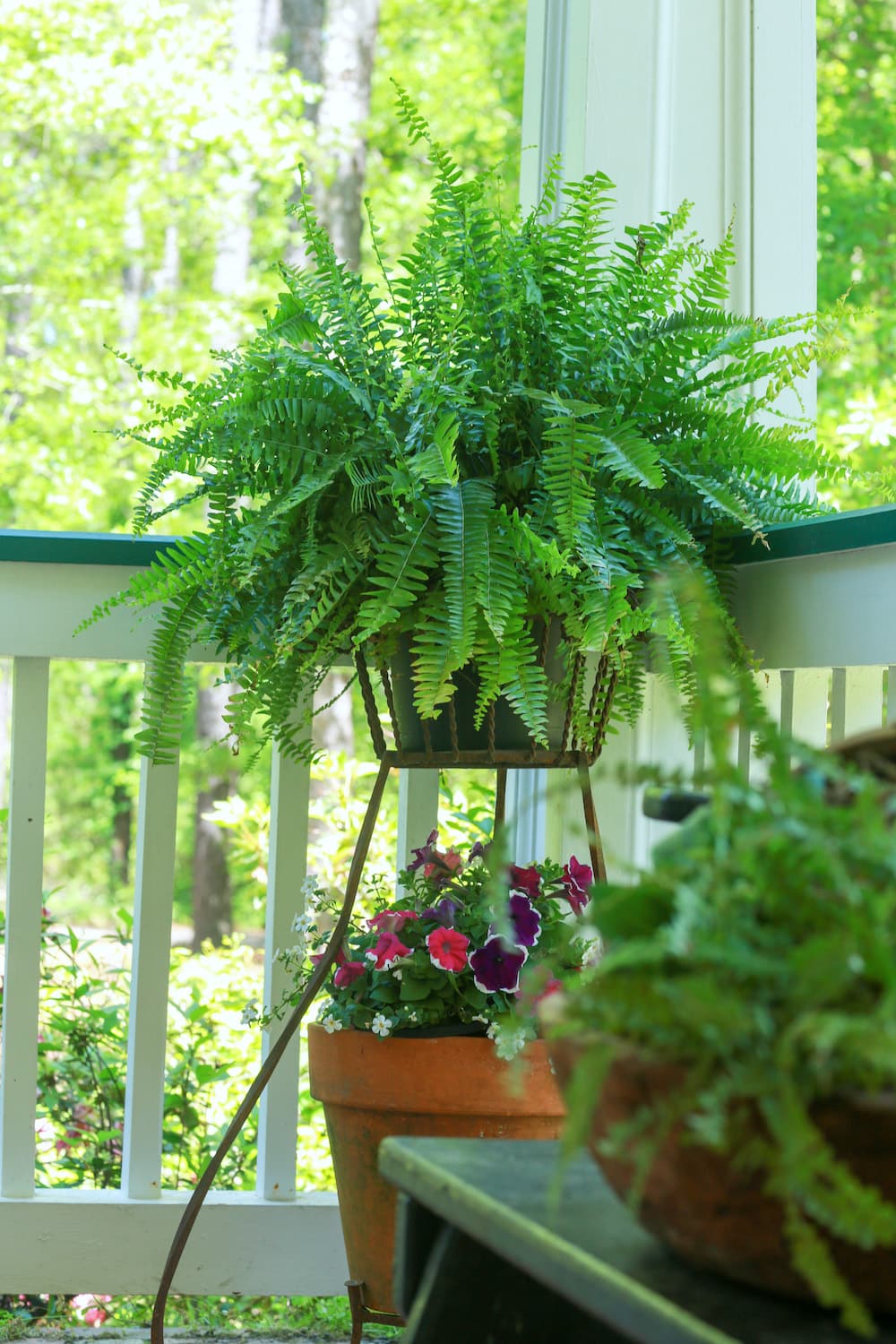
Watering Ferns: Overwatering or Underwatering
Ferns may yellow in response to overwatering or underwatering. They need evenly moist soil so that they don’t dry out. However, too much moisture is as bad as too little because excess water can cause root rot. A key to fern care is to make sure the bottoms of the pots have drainage holes so that the roots don’t stand in water.
How often do you water ferns in hanging baskets?
Ferns in hanging baskets beautify a room or porch if they are healthy. If your ferns are getting yellow, you may be watering too little or too much — but it’s probably too much! The ideal watering schedule will vary, depending on humidity levels. Water the fern when the surface soil starts to feel dry to the touch.
An occasional misting of fern fronds is great for the plant — ferns thrive on humidity.
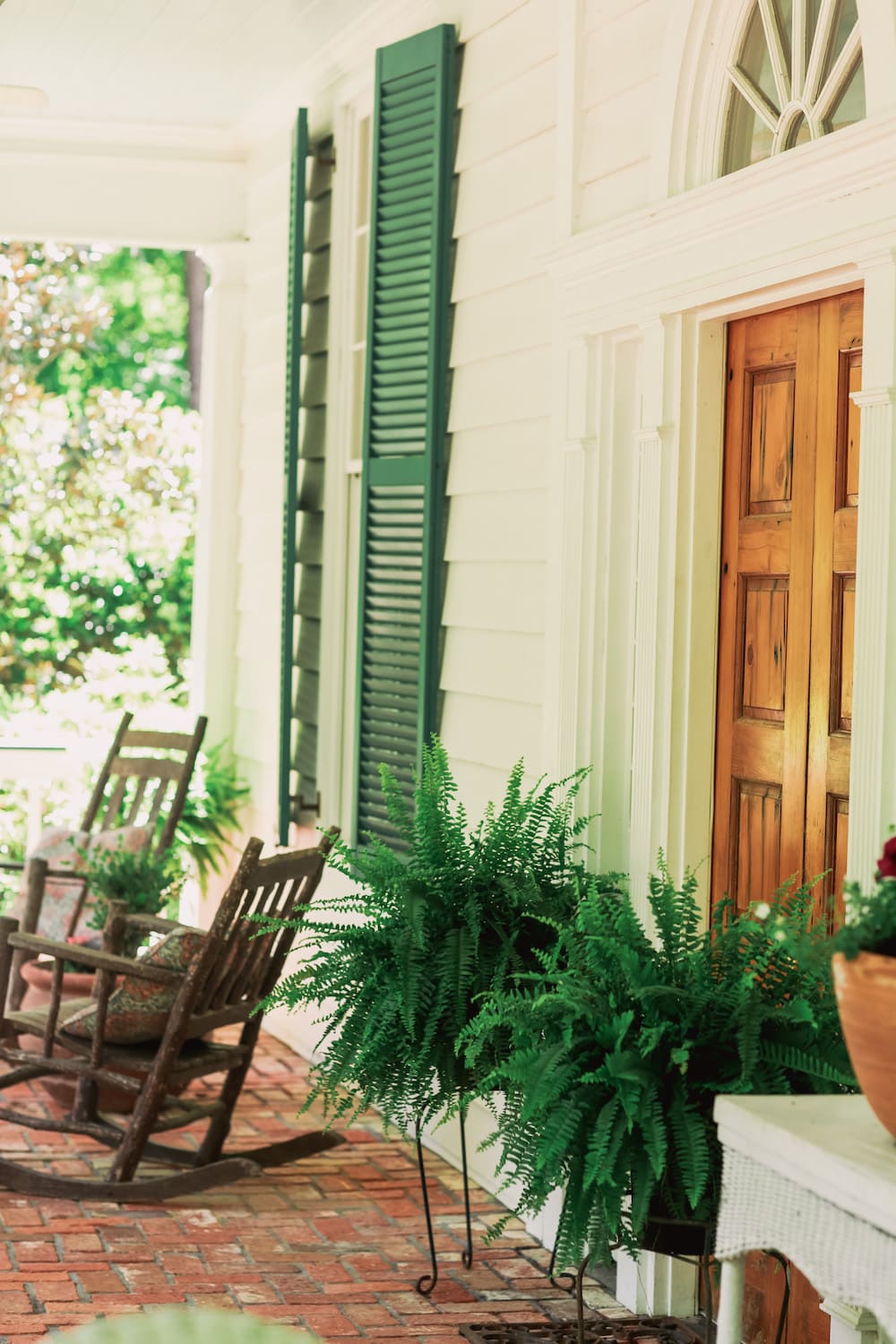
Too Much or Too Little Light
Another big factor in fern care is, of course, light conditions: ferns thrive in the shade, but they also need some indirect light periodically through the day. You can acclimate an indoor-grown fern to more light by bringing it outside for increasingly longer periods over time instead instead of all at once.
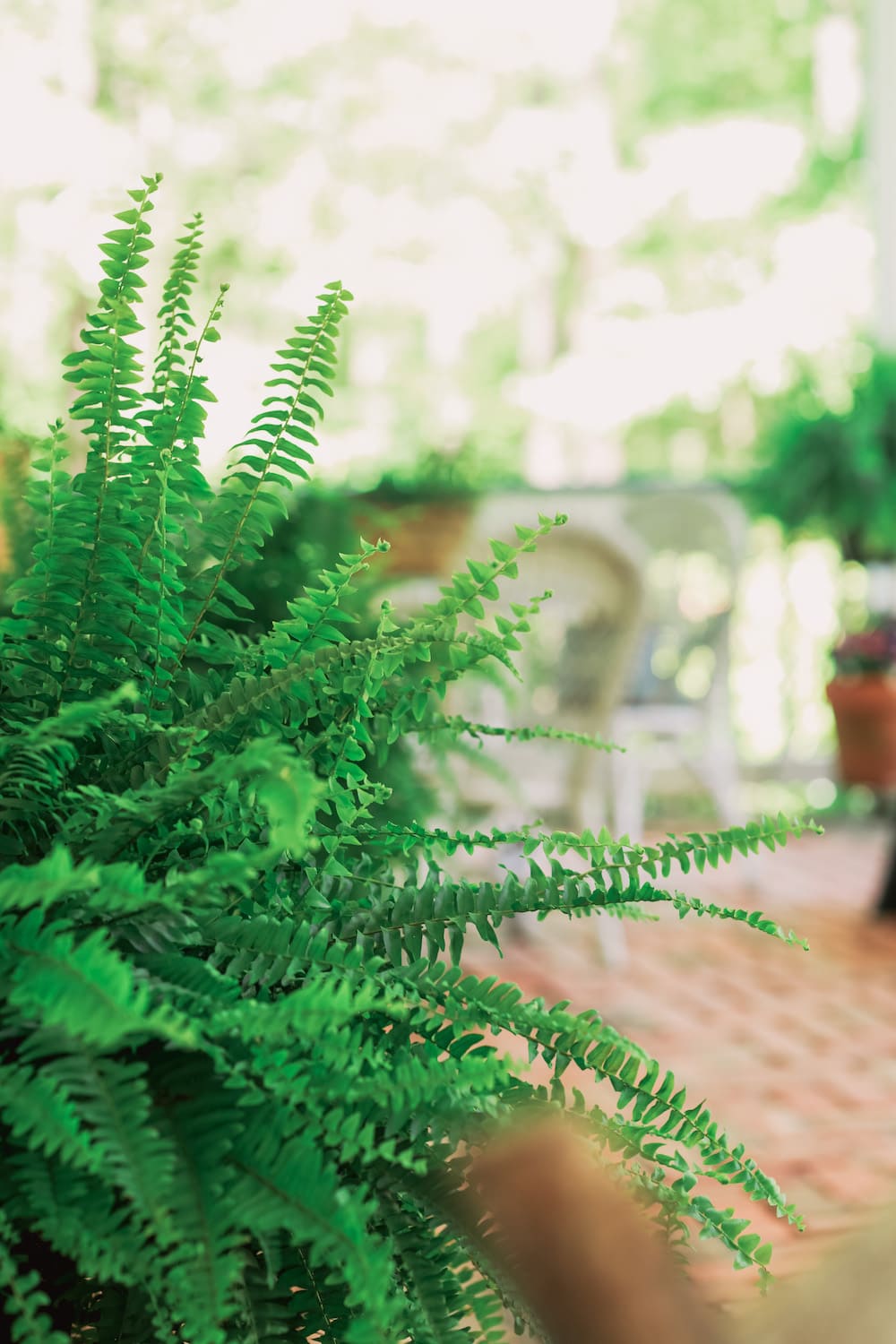
Lack of Nutrients
Like other plants, ferns need occasional food to replenish the soil. You can use a good houseplant liquid fertilizer or slow-release fertilizer to ensure that the ferns get enough (but not too much) nitrogen and minerals.
Yellowing ferns may be a sign that they’re not getting enough of the nutrients they need. Besides the right amount of plant food, how do you solve this problem?
Tips for Porch Fern Care
The trick I learned from my neighbor for healthy green ferns is — believe it or not — Epsom salt.
A porch with full sun won’t be the ideal environment for a fern, as too much direct sunlight can damage these delicate plants. But some morning sun is good. If possible, find a spot where the sunlight filters gently through trees or other partial cover.
How to Care for Ferns Outside
A key to growing outdoor ferns is to pick a type of fern that can thrive in your yard without too much effort. Here are a few fern varieties that are relatively easy to take care of:
- Christmas fern – likes full or partial shade
- Lady fern – tolerates sunlight pretty well; prefers moist soil. Caution: this fern is poisonous to pets!
- Button fern – does not need high humidity; ideal for an indoor garden because greenery stays a manageable size
- Boston fern or sword fern – needs a cool, shady environment
- Maidenhair fern – needs humid, shady environment with moist soil
- Wood fern – very adaptable and hardy
- Rabbit’s foot fern – great for hanging baskets; like bright light but no direct sun
How does Epsom salt help with fern care?
Epsom salt is an amazing substance that’s good for so many things. Have you ever had sore muscles, soaked in an Epsom salt bath, and then felt better? You may even have slept better that night. Epsom salt is a mineral compound made of magnesium and sulfate, two substances that do your body good. Lots of people have a magnesium deficiency, and soaking in an Epsom salt bath can help replenish levels of magnesium through the skin.
OK, so what does that have to do with fern care? It turns out that ferns are like people this way: they need magnesium and sulphur, too. And they can lose these substances over time through watering. Epsom salt to the rescue!

How do you use Epsom salt for ferns?
For fern care, you simply mix 2 tablespoons Epsom salt with a gallon of water and spray the mixture monthly on the ferns.
Watch the video on this page for step-by-step instructions on foolproof fern care with Epsom salt — as well as on how to use it between layers of soil for healthy tomato plants. (More on growing tomatoes here!)
Ferns as Indoor Plants
Tropical ferns such as the Boston fern can grow as well indoors as outdoors with the right care. Although Bosten ferns are relatively drought tolerant, consider using a humidifer in a dry indoor environment. Indirect light, well-drained soil, and monthly fertilizing are also key.
Other popular indoor choices include:
- asparagus fern
- button fern
- bird’s nest fern
All of the above prefer bright, indirect light. The tuberous roots of the asparagus fern let it go longer without water than some ferns, so you don’t have to keep the soil constantly moist.
Emergency Fern Care: How do you revive a dying fern?
If you already have dying ferns in pots, you may be able to save them by applying the information and tips above. Also check to make sure the fern pot’s drainage holes haven’t gotten clogged up. You can poke a pencil up into a drainage hole to open it up again.
If you have a fern with dried out fronds, you can trim the leaves down, leaving just the healthy parts of the leaves near the pot. Then remove the top couple of inches of old potting soil and add in fresh. Give the fern a good soaking in a spot where it can drain completely.
You may need to repot ferns in the spring to make sure that the roots don’t overfill the pot.
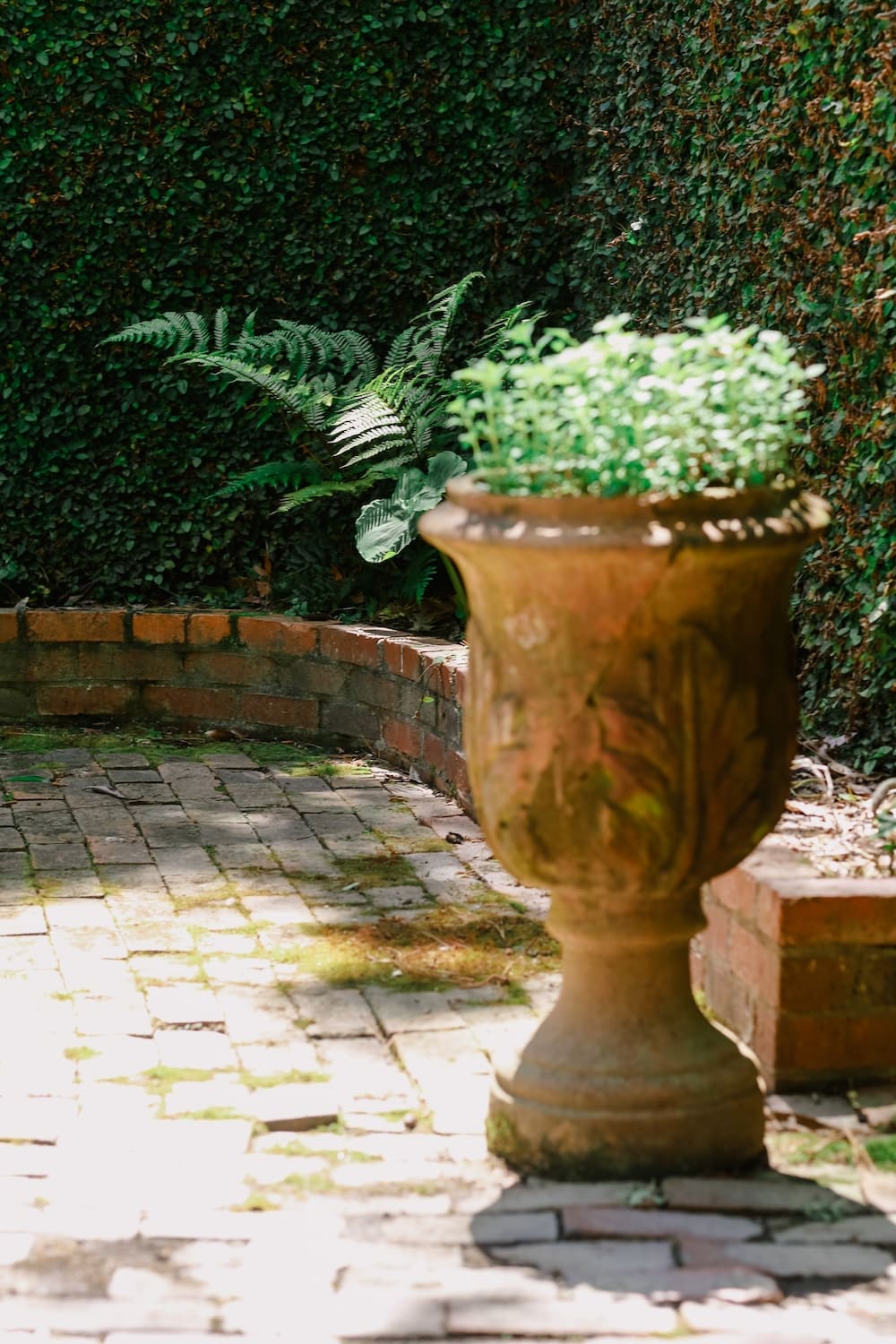




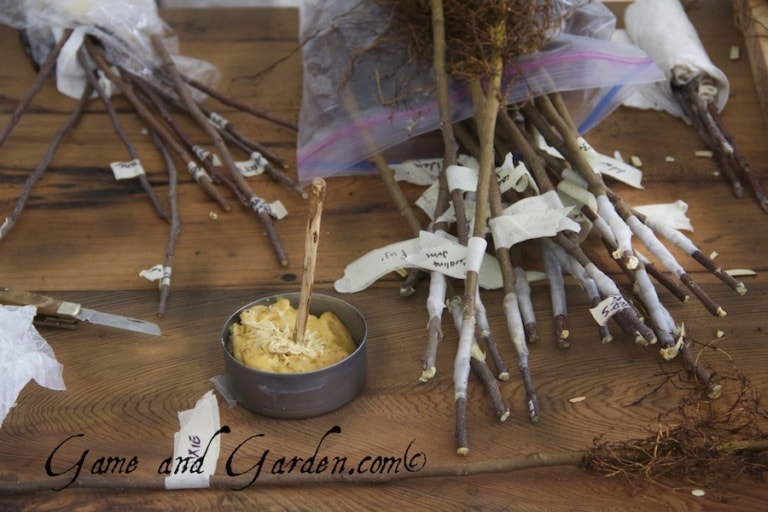
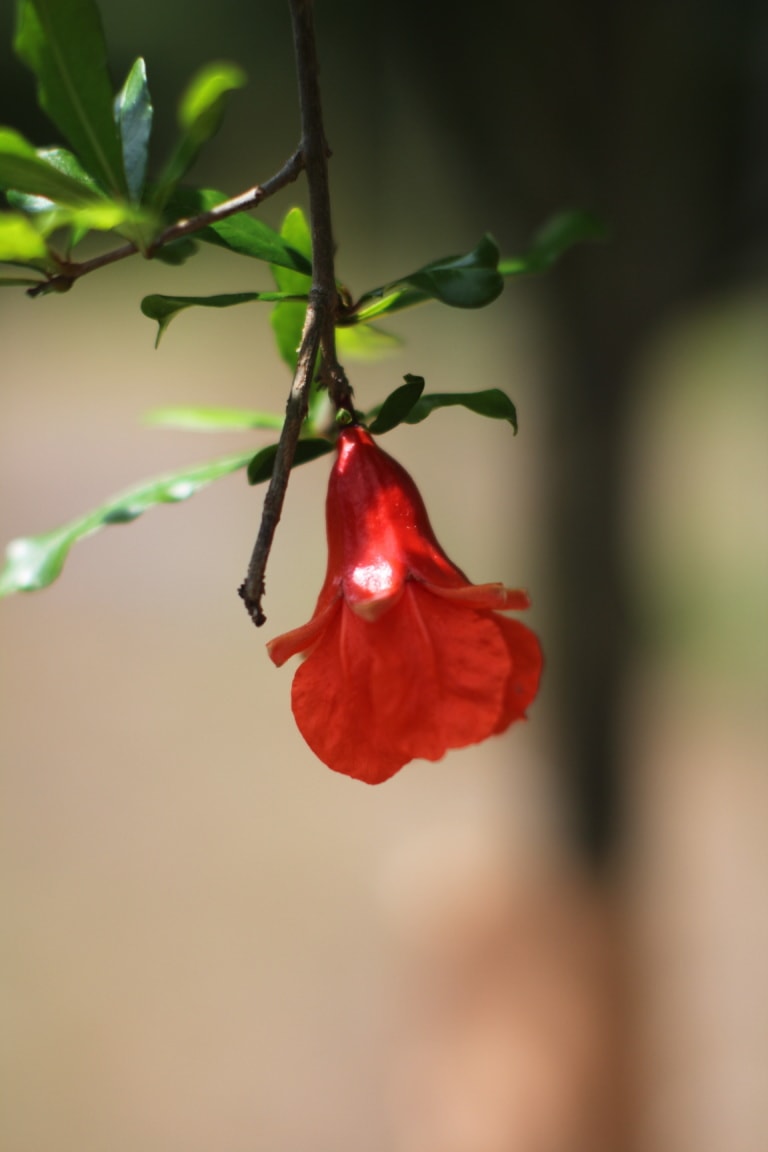
Hi Stacy – thank you so much for the correct measure of water and Epson salts. I am going to use this. Hopefully the ferns will start to flourish. Kind regards
I hope they do get lush and green! Mine are doing great this year. So far so good!
Something is eating my Boston Fern leaves. What can I do to save them?
I’m so sorry about that. Trim off the fronds that are eaten and fertilize with a liquid nitrogen.I hope that helps.
look for little black spots on floor under your fern. if you see some it’s likely caterpillar poop. the catepillars eat at night, so look for them with a flashlight. there is a spray to kill the caterpillars.
I’ll be looking out for that!! Thank you!
Stacy you can mix some liquid seven in a spray bottle to kill any bugs or worms eating on your ferns! It works for mine.
Betsy you can mix liquid seven in a spray bottle and spray on your ferns to kills worms and insects that are eating on them! It is safe , I use it on mine
Thanks so much for the tip!!
Thank you very helpful
I’m so glad it was helpful!! Good luck with your ferns!!